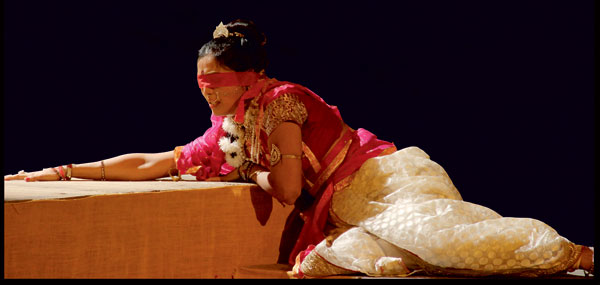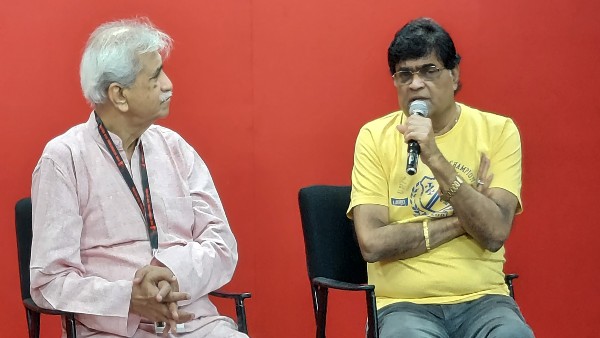
On completing her graduation from St Xavier’s College, she even approached Vijaya to cast her in one of her plays, “but she was very clear that I go away and explore the world and find myself. Growing up, Anahita assumed an innings in the Marathi theatre was the way forward. And no matter how young I was, my opinion was valued.”

It wasn’t just good enough to say ‘I liked it or didn’t like it’.

Whoever watched a film or a play came back and discussed it. “For us, it wasn’t a casual thing about just going to a film and forgetting about it. Our grandmother was perpetually talking about shoots, so I just thought, existentially, it’s quite normal,” she says. “My parents were always with scripts in hand, rehearsing lines. Her maternal home at Napean Sea Road was a rehearsal hub. “I would step into rooms carefully because I thought people would be rehearsing their lines before I walked in.” My brothers (Deven and Ravi Khote) would make fun of me and say I was like Jim Carrey in The Truman Show,” laughs Anahita. “In fact, until I was about four, I used to think everything was scripted. I found theatre.”Īnd life became an endless unscripted dramatic narrative for the family. But because of my influences, I went in search of something that I wanted to do. Shobhna Samarth and Nalini Jaywant are my cousins. He was very proud of what I did,” says Vijaya. I was never around and he didn’t make me feel guilty about it. “All this was possible thanks to a supportive family, especially my husband (actor Farrokh Mehta). I realised it’s the process rather than the product that matters,” says the former chairperson of the National Centre for the Performing Arts ( NCPA).Īnahita has been witness to the process Vijaya speaks of so fondly. We would watch each other work and that enriched us. “There was Ravi Shankar and Kishori Amonkar, there was (Ebrahim) Alkazi and then there was me, there was (Vasudeo) Gaitonde and then there was Akbar Padamsee all working under one roof. The octogenarian often reflects on her early years. We wanted to define who we were as the creative people of India.” In the case of Anisa, it’s the result of her own search.”Ī product of the postindependence renaissance of the arts and the Bhulabhai Desai Memorial Institute, Vijaya says, “We were the first young generation of independent India. Everyone who’s doing what they are doing in this family is because they believe in it. Vijaya, who has been carefully listening, says, “Although we belong to different generations, what’s common among all three of us is that we are very committed. “And that for us is so special,” says Anahita, while drawing our attention to the two decoupage vases, which Anisa created for her portfolio. She’s off to pursue a BA in prosthetics and special-effects make-up at the Arts University of Bournemouth this September.

Some Lesser Known Facts About Ashok Saraf Nagpur, Central Provinces and Berar, British India (now in Maharashtra) Note: Along with the above-mentioned awards, Saraf has also won 4 Filmfare Awards and 10 Maharashtra Government Awards for his performance in the Marathi Films. Best Comedian in Maharashtracha Favorite Kon?.

Hamidabaichi kothi marathi drama movie#


 0 kommentar(er)
0 kommentar(er)
